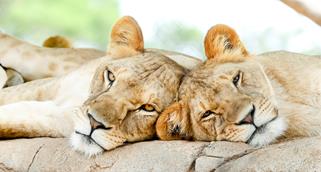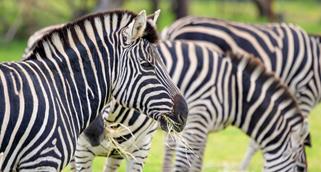African Lion
Kings of the savannah, lions are some of the most majestic animals we share our planet with.
Lions once ranged throughout northern Africa, south-west Asia, Europe and India. Now, they’re mostly found in Sub-Saharan Africa, with one subspecies living in India.
Werribee Open Range Zoo has welcomed three adorable African Lion cubs!
On Sunday 4 June 2023, Werribee Open Range Zoo's lioness, Nilo, gave birth to three precious cubs (two males and one female). After spending the last 8 weeks bonding with mum, the three cubs have started venturing further out of their den and into the Lion habitat for short periods of time each day. Meet Mwezi (pronounced Mw-e-zee), Kianga (pronounced Kee-ang-uh) and Jango (pronounced Jan-go). These names are from languages used in the African regions were wild lions are found, and the names also align with the personalities of the lion cubs.
African Lions in the Wild
Their numbers are rapidly decreasing due to habitat destruction, trophy hunting, disease, and killing by farmers to protect livestock.
Losing top-order predators such as lions can disrupt an entire ecosystem; they help to keep grazing animal populations in check, ensuring there is enough food in the savannah. It’s not known how many lions remain in the wild in Africa. Recent estimates range from around 23,000-39,000.
Lions are carnivorous, and hunt a variety of prey including zebra, wildebeest, impala, buffalo and warthog. They live in large family groups called prides. The females of the pride hunt as a team, using an ambush method. They’re the only cats that live in family groups, and their prides can have up to 30-40 members.
An average male lion stands just over one metre tall, can grow up to three metres long, and weighs about 220kg. Female lions are considerably smaller. Cubs are born with spots, and sometimes retain a few into adulthood. Male lions are easily identified by their distinctive brown manes that grow as they mature.
Facts about lions
- The pride is usually dominated by a single male, related females and their cubs.
- On average, the length of time a lion is in control of a pride is 2–3 years. Competition among males to take over a pride can be ferocious!


